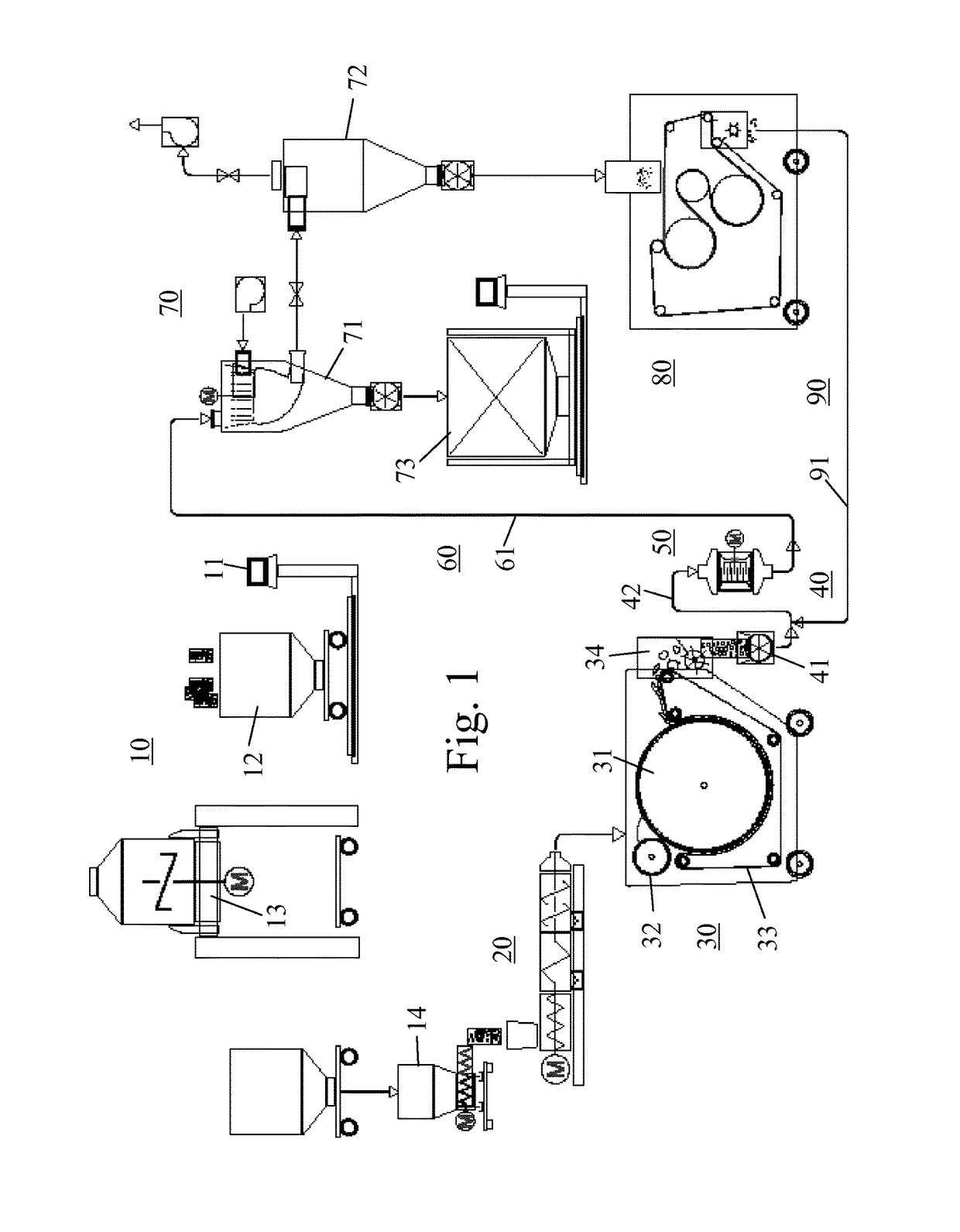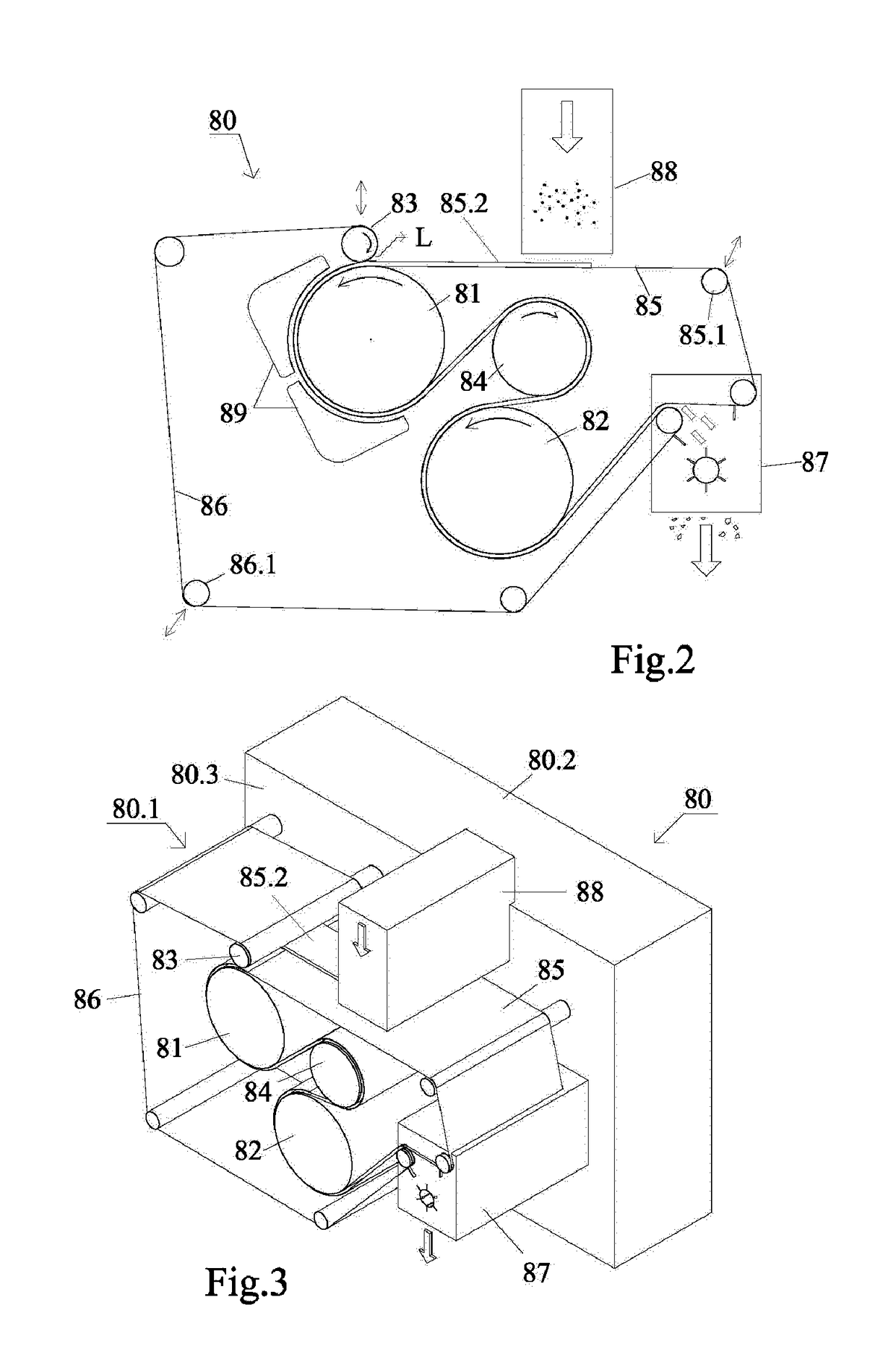Method for producing powder from a granular, thermoplastic material and device for producing chips from a powdery, thermoplastic material
a thermoplastic material and powder technology, applied in the direction of granulation by pressing, granulation on conveyor belts, climate sustainability, etc., can solve the problems of not all particle sizes being used, and the net throughput of the extruder greatly reduced
- Summary
- Abstract
- Description
- Claims
- Application Information
AI Technical Summary
Benefits of technology
Problems solved by technology
Method used
Image
Examples
Embodiment Construction
[0008]One object of the invention is to indicate a method of the kind mentioned at the outset that avoids this disadvantage. This object is achieved in the invention by the method according to claim 1, which thus is characterized in that a second melt is produced from the selected fraction in a non-homogenizing third device, with second chips being produced from the latter, and that the second chips are combined with the first chips and milled with each other.
[0009]The invention makes use of the circumstance that the fraction selected for return is itself already homogenous. In this regard, it is sufficient that the latter fraction be used without being homogenized again and run through the extruder again in order to produce chips that can be easily combined with the chips produced from the newly used material running through the extruder, and milled together with the latter. In particular, producing chips from the fraction selected for return also requires no second extruder. A thi...
PUM
| Property | Measurement | Unit |
|---|---|---|
| temperature | aaaaa | aaaaa |
| temperature | aaaaa | aaaaa |
| particle sizes | aaaaa | aaaaa |
Abstract
Description
Claims
Application Information
 Login to View More
Login to View More - R&D
- Intellectual Property
- Life Sciences
- Materials
- Tech Scout
- Unparalleled Data Quality
- Higher Quality Content
- 60% Fewer Hallucinations
Browse by: Latest US Patents, China's latest patents, Technical Efficacy Thesaurus, Application Domain, Technology Topic, Popular Technical Reports.
© 2025 PatSnap. All rights reserved.Legal|Privacy policy|Modern Slavery Act Transparency Statement|Sitemap|About US| Contact US: help@patsnap.com



